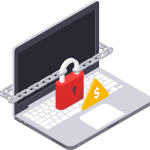Most people know they shouldn’t post their e-mail addresses in plain text on the Web anymore. Bots and spammers regularly scan sites for e-mail addresses and add them to their subscription lists. Trying to hide your address with a trick like “myname AT sun DOT ac DOT za” is helpful, but some bots can see straight through that. Scr.im hides your e-mail address behind a link and a captcha to make sure that spammers don’t get a hold of it, or at least have to prove they’re human before they can see it.
You want to give your e-mail address to a friend on a forum, but neither of you wants to go first publicly. Perhaps you want to trade addresses with someone on Twitter, but you’re afraid you’ll botch the direct message and it’ll be public. With Scr.im, you can get a URL to give out instead of your e-mail address, and the person who sees it can click on the address, confirm their humanity, and they’ll see your address.

Most services already have workarounds in place to help you keep things like personal information private between you and the person for whom it’s intended. For example, Twitter has direct messages, forums usually have private messages, and there’s always IM. However, there are some times when it’s just easier and faster to reply with your contact information, and Scr.im allows you to share confidently.
To use the service, you do have to give Scr.im your e-mail address. Type it into the front page, and the service will either generate a Scr.im URL for you, or your can type in your desired suffix if you want something a bit more personal. Once the URL is activated, you can post it freely, and anyone who wants to use it will have to verify they’re a human before your address is displayed.

Scr.im isn’t the only service that protects your e-mail address behind a captcha; Tinymail has been doing something similar for years. However, Scr.im gives you the option of personalizing your address, something Tinymail doesn’t offer. If you post your Scr.im URL publicly, you still run the risk of people you didn’t intend to have your e-mail address getting it, but it’s much safer from an anti-spam perspective than simply typing your e-mail address on the Web.









